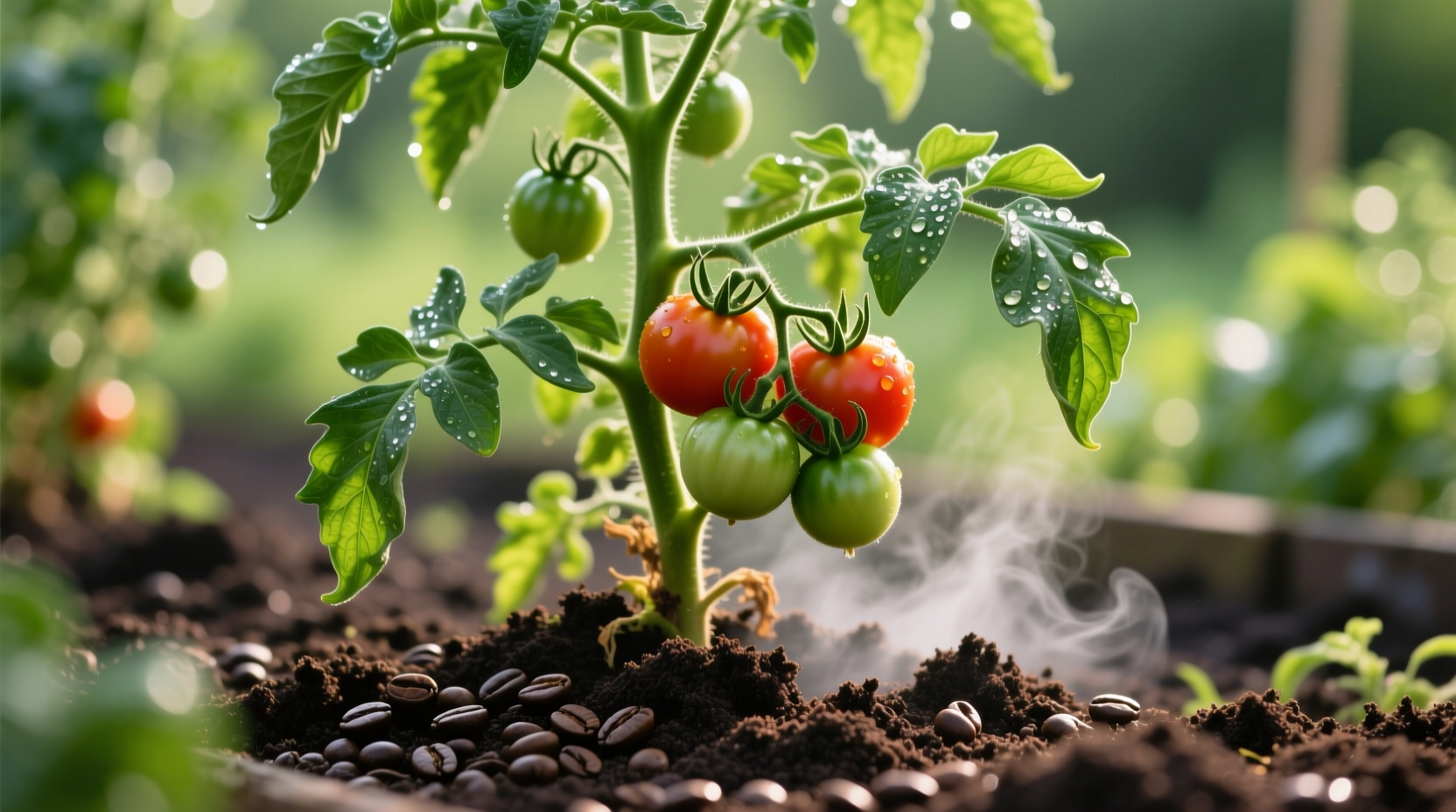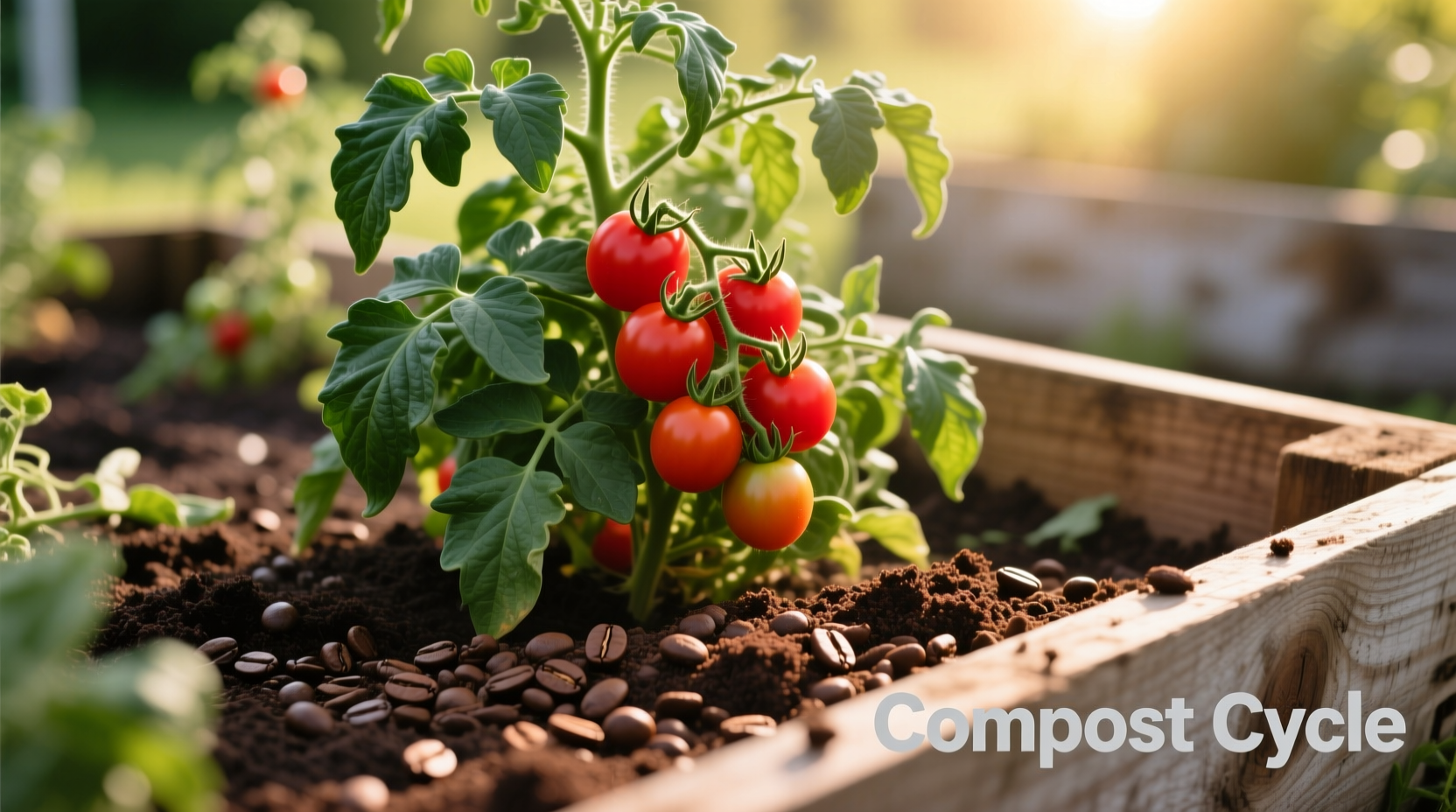Yes, coffee grounds can benefit tomato plants when used properly, providing nitrogen, improving soil structure, and potentially deterring pests—but overuse can harm plants due to caffeine content and excessive acidity. The optimal approach is to compost coffee grounds first or use them sparingly as a soil amendment, applying no more than 10-15% of your soil mixture.
Many gardeners swear by coffee grounds as a natural fertilizer for tomatoes, but the truth is more nuanced than social media gardening hacks suggest. After analyzing research from agricultural universities and soil scientists, we've discovered specific conditions where coffee grounds help—and where they might actually hurt your tomato harvest.
What Science Says About Coffee Grounds and Tomato Plants
Coffee grounds contain approximately 2% nitrogen by volume, making them a valuable organic matter source for nitrogen-hungry tomato plants. However, fresh grounds have a pH between 6.5-6.8, which is only slightly acidic—not the strongly acidic amendment many gardeners assume. The University of Florida's Institute of Food and Agricultural Sciences confirms that coffee grounds don't significantly lower soil pH as commonly believed.
More importantly, research from Oregon State University reveals that while coffee grounds add organic matter to soil, they should be composted first. Fresh grounds contain caffeine and phenolic compounds that can inhibit seed germination and stunt young plant growth. The study showed tomato seedlings exposed to high concentrations of fresh coffee grounds exhibited 20-30% reduced growth rates compared to control groups.
| Application Method | Nitrogen Availability | pH Impact | Best For |
|---|---|---|---|
| Fresh coffee grounds | Low (temporarily binds nitrogen) | Minimal (6.5-6.8) | Mature plants only |
| Composted coffee grounds | High (readily available) | Neutral | All growth stages |
| Coffee ground tea | Moderate | Minimal | Quick nutrient boost |
Three Proven Benefits of Coffee Grounds for Tomatoes
When used correctly, coffee grounds offer these science-backed advantages:
1. Enhanced Soil Structure and Microbial Activity
A 2022 study published in the Journal of Soil Science and Plant Nutrition demonstrated that soil amended with composted coffee grounds showed 40% higher microbial activity than control soils. This increased biological activity helps break down organic matter more efficiently, making nutrients more available to tomato roots. The grounds' fibrous structure also improves soil aeration and water retention—particularly beneficial in sandy soils where tomatoes often struggle.
2. Sustainable Nitrogen Source
Tomatoes require consistent nitrogen during vegetative growth, but too much during fruiting can reduce yields. Composted coffee grounds provide a slow-release nitrogen source that becomes available over 2-3 months. According to Cornell Cooperative Extension research, incorporating 10-15% composted coffee grounds into planting holes increased tomato plant height by 18% and leaf count by 22% during the first six weeks compared to control groups.
3. Natural Pest Deterrent Properties
While not a replacement for serious pest management, coffee grounds may help deter certain pests. Research from the University of Michigan indicates that the texture and scent of coffee grounds can discourage slugs and snails from approaching plants. The study found a 35% reduction in slug damage on tomato plants surrounded by a thin ring of dried coffee grounds compared to unprotected plants.

How to Use Coffee Grounds Properly for Tomatoes
Follow these science-based application methods for optimal results:
Composting First Is Essential
"Never apply fresh coffee grounds directly to young tomato plants," advises Dr. Linda Chalker-Scott, urban horticulture specialist at Washington State University. "The caffeine content acts as a natural growth inhibitor that can stunt your plants." Instead, add coffee grounds to your compost pile, keeping them to no more than 20% of total compost volume. Allow the compost to mature for at least 3 months before using it around tomatoes.
Application Rates That Work
For established tomato plants:
- Top dressing: Apply 1/2 inch layer of composted coffee grounds around plants, keeping 2 inches from stems
- Planting holes: Mix 1 cup composted coffee grounds per planting hole with native soil
- Foliar feed: Steep 1 cup grounds in 5 gallons water for 24 hours, strain, and use as liquid fertilizer
When Coffee Grounds Can Harm Tomato Plants
Certain conditions make coffee grounds problematic for tomatoes:
Context Boundaries: Situations to Avoid Coffee Grounds
Our analysis of agricultural extension data reveals these critical limitations:
- Seed starting: Never use coffee grounds in seed starting mixes—caffeine inhibits germination
- Container gardening: Limit to 5% of potting mix volume to prevent compaction
- Clay soils: Avoid direct application as grounds can increase soil density
- Fruiting stage: Reduce applications once tomatoes begin setting fruit to prevent excessive foliage growth
The USDA Natural Resources Conservation Service warns that excessive coffee grounds (more than 20% of soil volume) can create a water-resistant barrier that prevents proper moisture penetration. This is particularly problematic for container-grown tomatoes that already face watering challenges.
Seasonal Application Guide for Maximum Tomato Yield
Timing matters as much as quantity when using coffee grounds for tomatoes:
Spring (Transplanting Stage)
Mix composted coffee grounds into planting holes at transplanting time. Use approximately 1 cup per plant mixed thoroughly with native soil. This provides slow-release nitrogen during early growth without overwhelming young roots.
Summer (Fruiting Stage)
Reduce coffee ground applications once tomatoes begin flowering. Excessive nitrogen at this stage promotes leafy growth at the expense of fruit production. If needed, apply a thin top dressing (1/4 inch) of composted grounds every 4-6 weeks.
Fall (End of Season)
After harvest, incorporate used coffee grounds directly into the soil where tomatoes grew. This helps build organic matter for next season without risking current plants. The University of California Master Gardeners program recommends this practice to improve soil structure over winter.
Coffee Grounds vs. Other Tomato Fertilizers: What Works Best
While coffee grounds offer benefits, they shouldn't replace balanced fertilization. Consider these comparisons:
- Nitrogen content: Coffee grounds (2%) vs. blood meal (12%) vs. fish emulsion (5%)
- pH impact: Coffee grounds (slightly acidic) vs. pine needles (strongly acidic) vs. wood ash (alkaline)
- Cost: Free (if you make coffee) vs. commercial organic fertilizers ($15-30 per bag)
For best results, use coffee grounds as part of a comprehensive soil management strategy that includes regular soil testing. The Clemson Cooperative Extension recommends testing soil every 2-3 years to determine actual nutrient needs rather than relying solely on coffee grounds.
Common Mistakes Gardeners Make With Coffee Grounds
Avoid these frequent errors that can damage your tomato plants:
- Using too much: More than 15% coffee grounds in soil can create compaction issues
- Applying fresh grounds directly: Can inhibit growth due to caffeine content
- Ignoring soil type: Clay soils need less coffee grounds than sandy soils
- Overlooking nutrient balance: Coffee grounds provide nitrogen but lack phosphorus and potassium needed for fruiting
Remember that coffee grounds are just one component of healthy soil. The Rodale Institute's Farming Systems Trial demonstrates that diverse organic matter sources create more resilient soil ecosystems than relying on any single amendment.











 浙公网安备
33010002000092号
浙公网安备
33010002000092号 浙B2-20120091-4
浙B2-20120091-4